We eventually left foggy Henties and the ocean behind and headed towards the desert.
We have figured out already that, no matter where we go, signage in is not always what we expect. We had calculated more or less how far out of Henties we should get a turn off to the Dead Sea Swimhole, but when we got to that point we saw a sign of the local Henties Tourism pointing to the Dead Sea and not an official (brown) tourist sign like we’re used to. We decided to go for it and turned off into the desert.
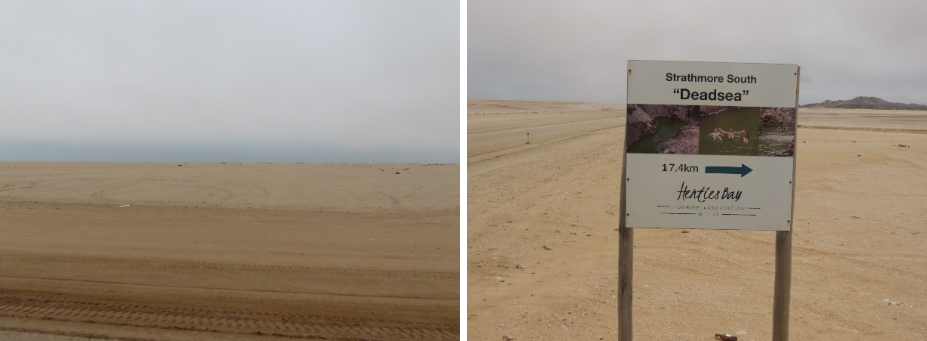
Once in the desert we saw a myriad of car tracks going off road in all directions.
According to the sign it was about 17,5km inland and we kinda followed a sort of main track. But the track was so badly corrugated at certain (or most) places that visitors had gone off road and started driving next to the main track. We could see that this procedure must have happened a million times, because wherever new tracks were made, these in time also became badly corrugated and the whole thing repeated itself. We drove through sections of this desert where that main track had easily widened to 50 m or more.
After our foggy days on the Henties beach, the weather hadn’t improved: grey and cloudy skies with sunshine peeping through only every once in a blue moon. It’s definitely not the traditional image that we have of a desert!
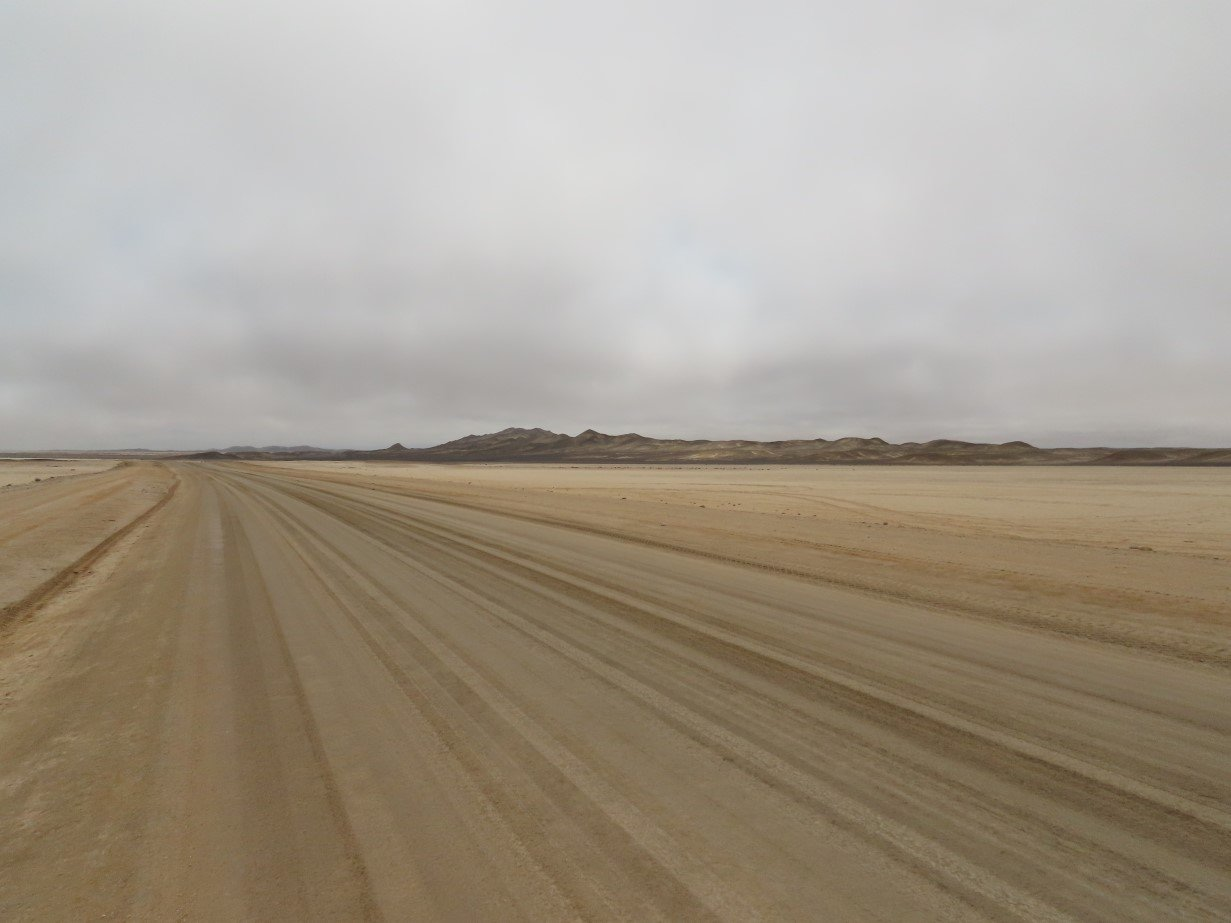
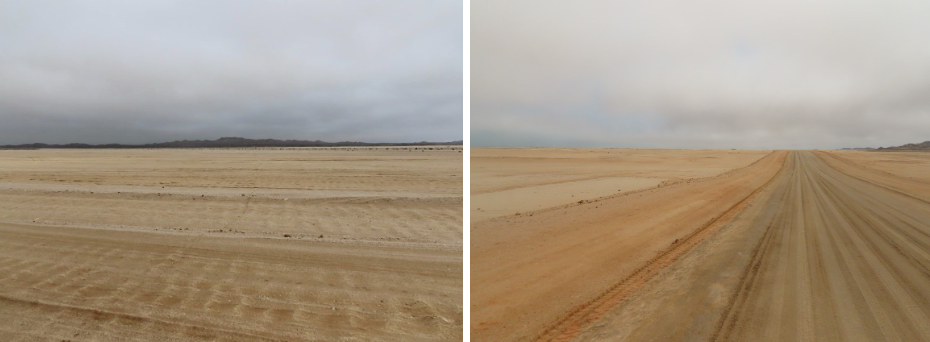
Add to that, that in this area (and many other in Namibia) digging for gemstones, minerals, ores etc. is a national sports, the sand and rock desert floor is carved by tire tracks like a piece of old leather. Seeing we didn’t see any signage we kinda went criss-cross across the vastness of this sandpit, following tracks and again and again, following other tracks.
We followed some tracks going over a hill and we thought that we possibly could have a better view from up there. Imagine our surprise when we crested the hill top and we saw from afar a striking pile of pinkish stone. When we went closer we saw piles and piles of rose quartz and an old tent. We presumed this was a claim of someone digging for gemstones, but were quite surprised that it was left completely unattended (or abandoned).
We left the quartz piles and turned back to, what we supposed, was the main track to the swimhole.
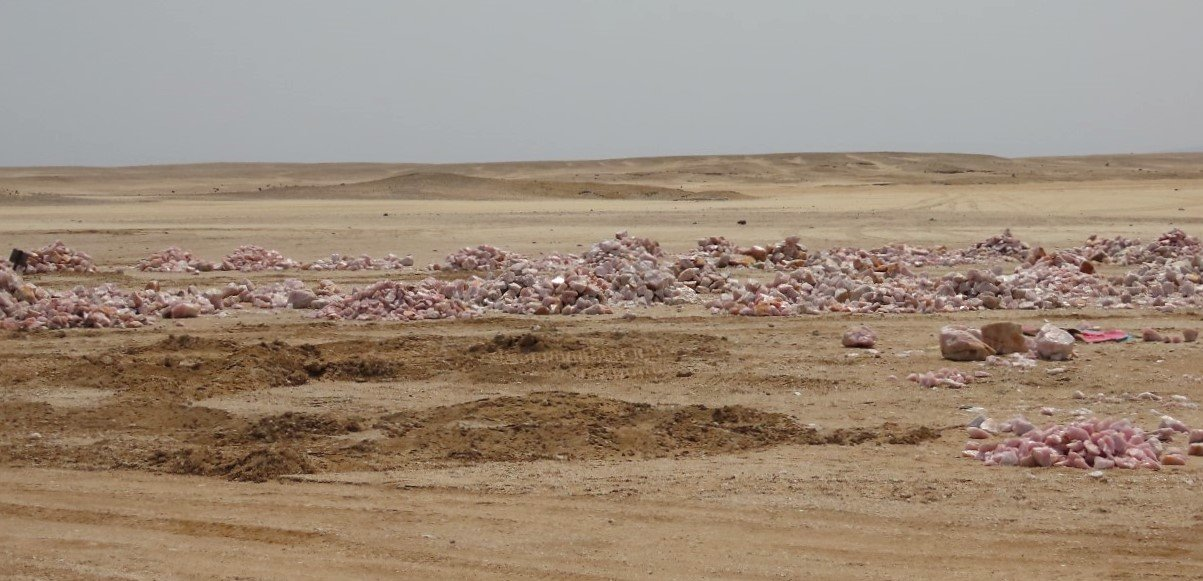
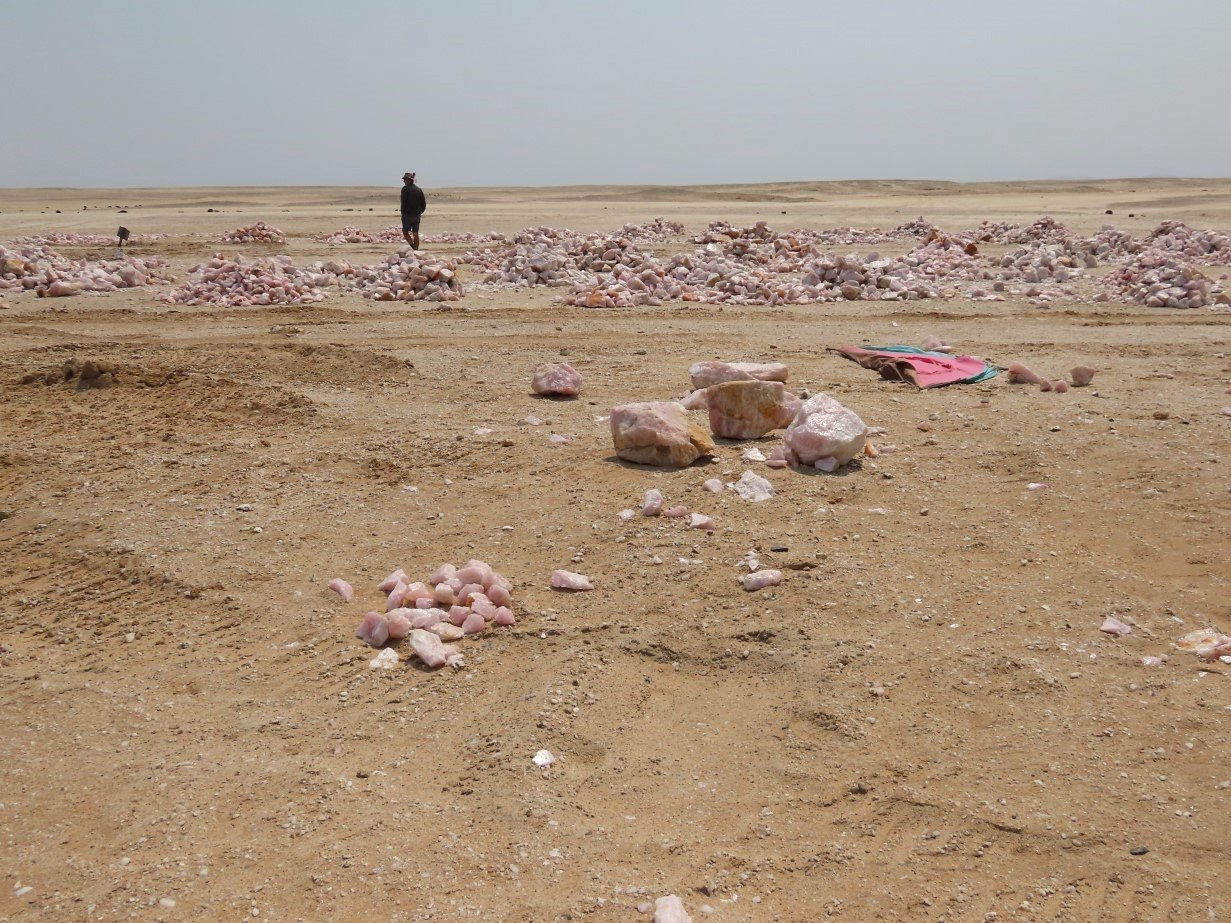
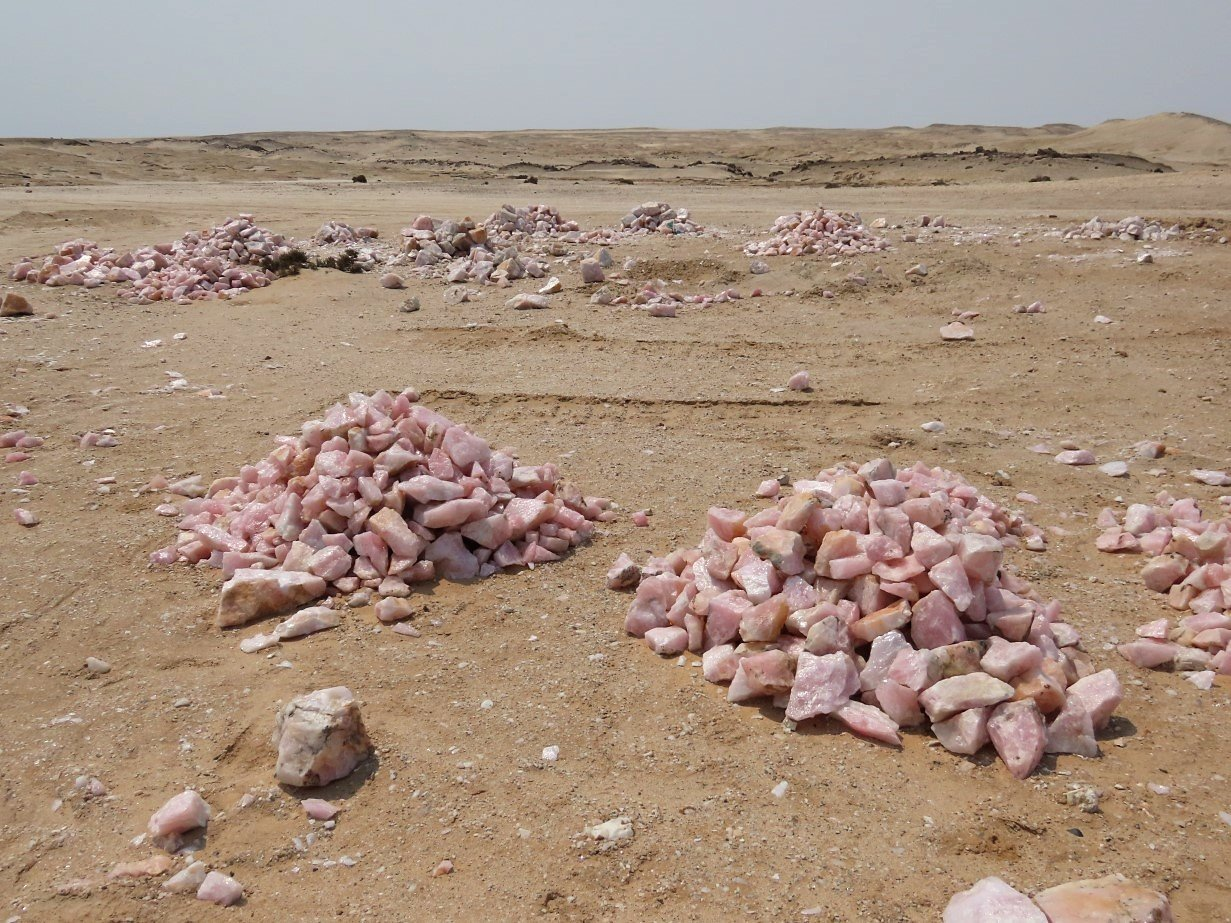
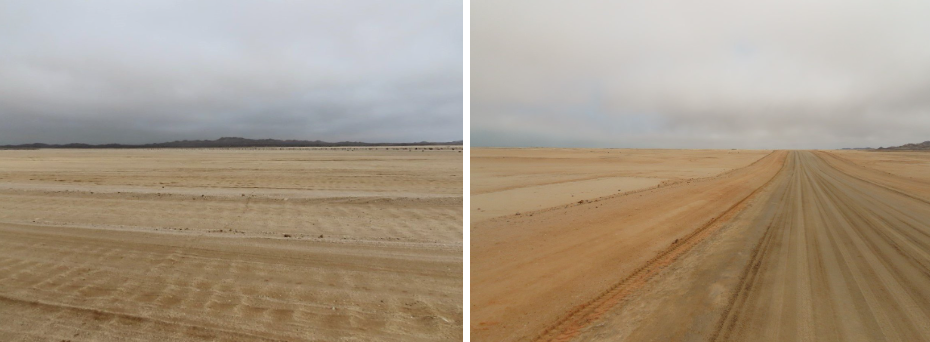
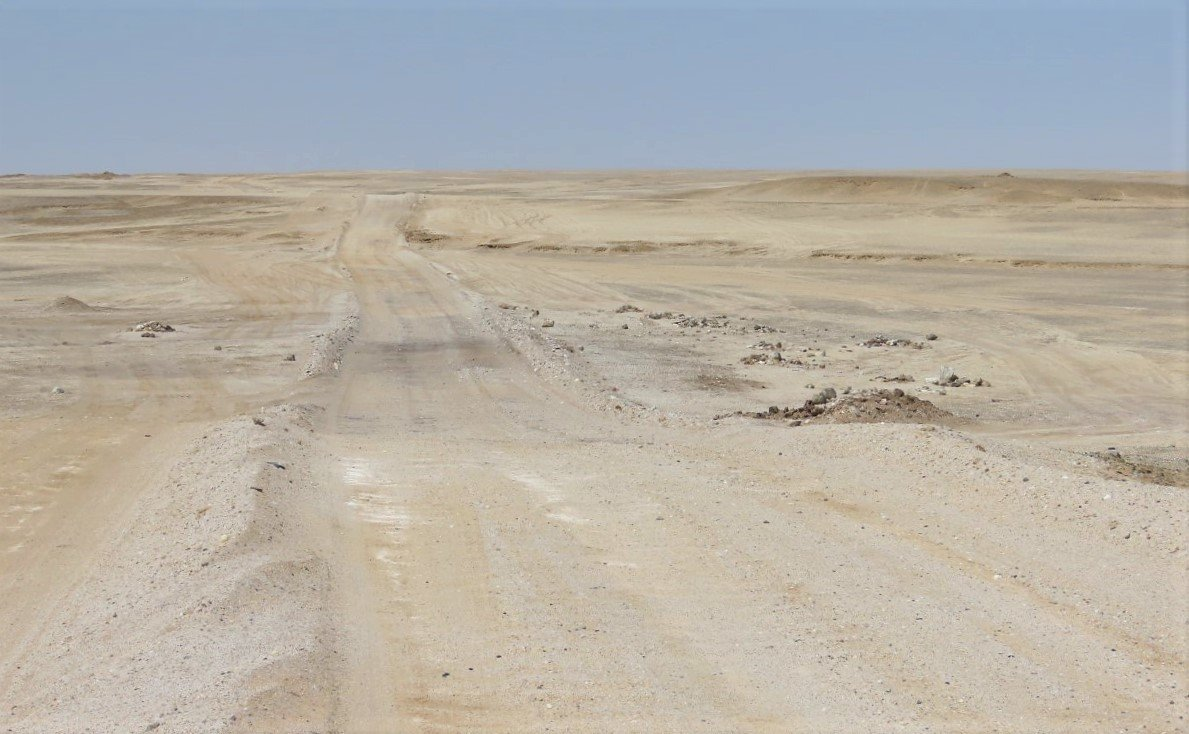
Eventually we saw a very crudely painted sign indicating the direction to the swimhole. We found another two signs and eventually found the Dead Sea Swimhole: an abandoned tin mine that has filled up with water. The salinity and minerals in the water make that you can float!
We weren’t sure how far behind the Shaws were, so Stefaan got into the water. (I declined, because me and cold water don’t go well together). Stefaan had his 15 minutes of floating and then got out to take a shower to get all the salt of his body. By then I was actually quite intrigued by this whole floating affair and because Stefaan insisted how weird it had felt, I decided to give it a go too. Luckily the water wasn’t too cold (and the sun was just peeping through the clouds for a short while) and I had my 10 minutes of floating too. In the case of our floating session in the Dead Sea – Namibia style – a picture really doesn’t paint a thousand words. The feeling of the weightless-ness is something that just doesn’t translate into a photo.
By that time the Shaws had also arrived and shortly thereafter, they too had their floating session in the Dead Sea.
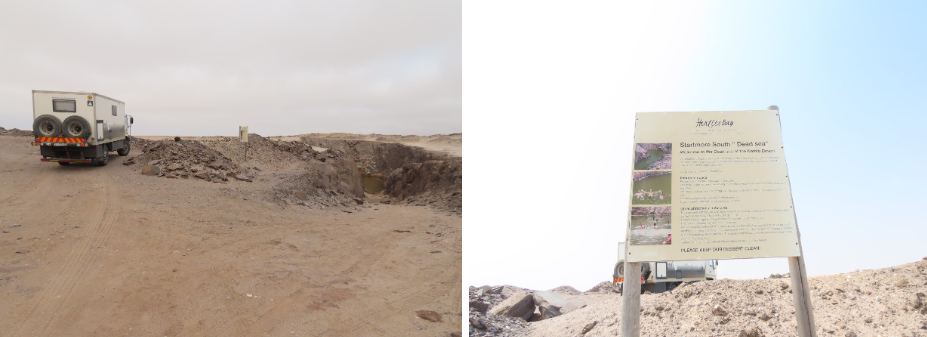
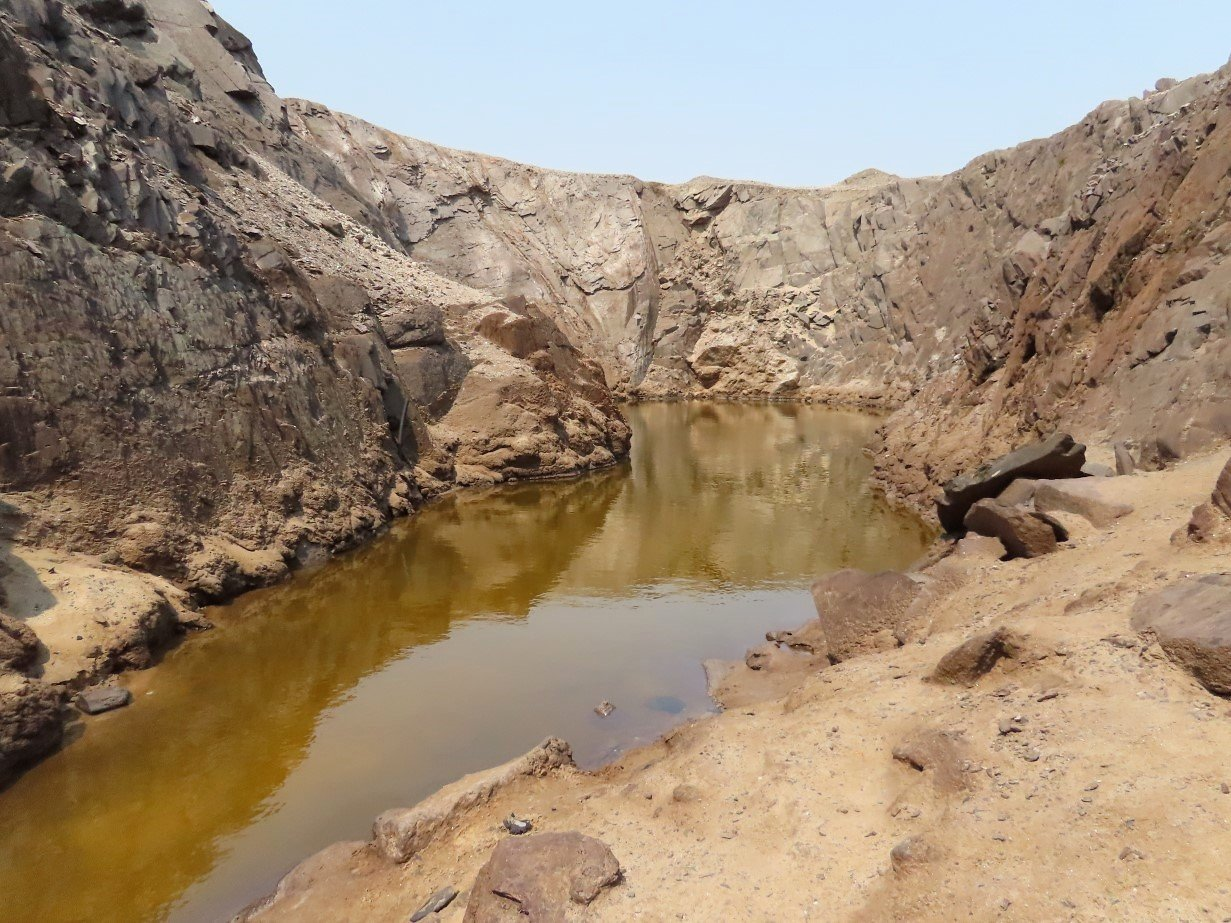
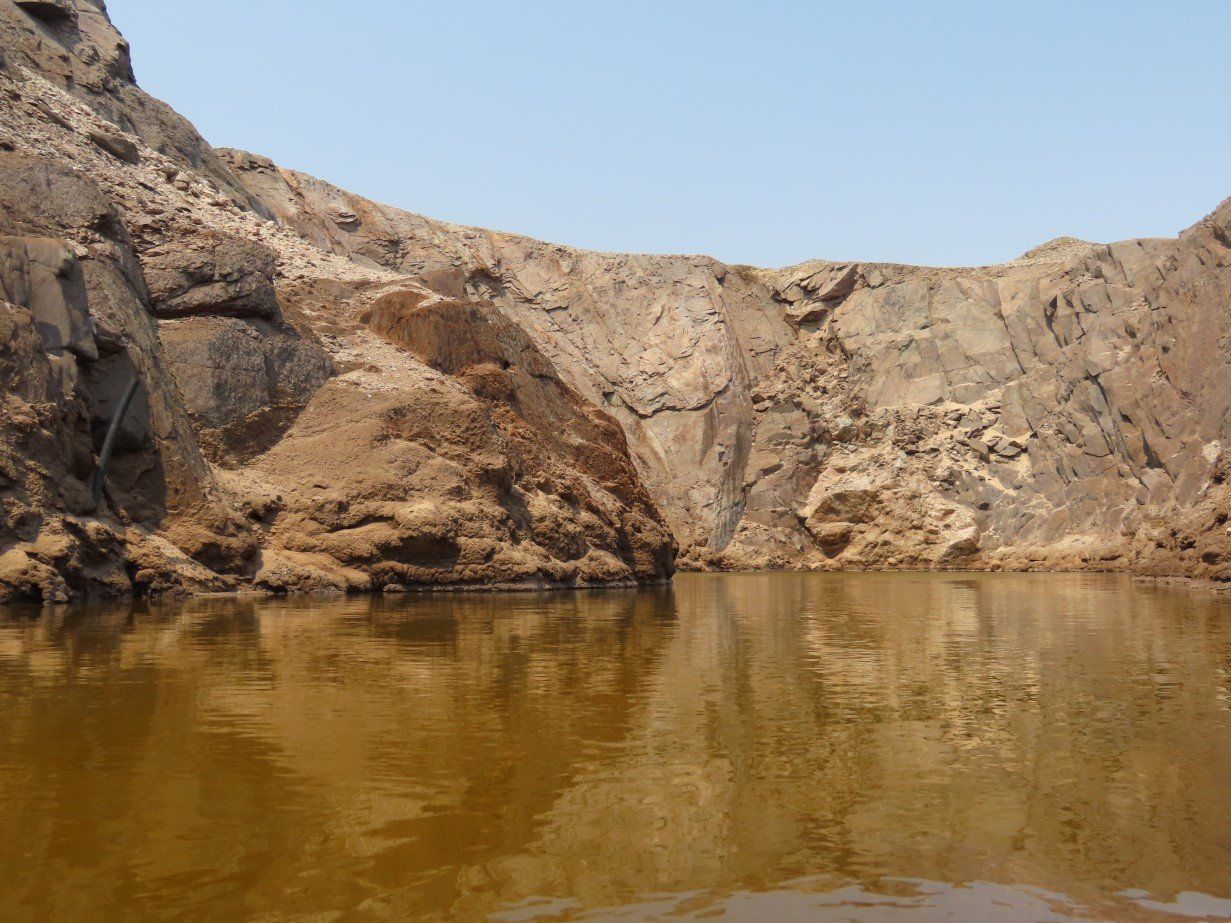
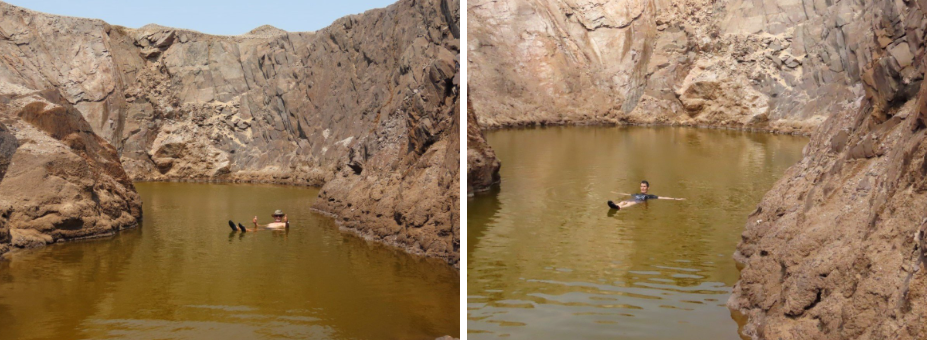
After the floating sessions, Lee and I had a cappuccino or two, and chatted about a million things, while the men went for a walk, searching for whale bones and old graves as was advertised on the information board. Although they did find old rusted and discarded stuff from miners and prospectors, they didn’t find the whale bones nor the graves. We shared supper duties and eventually called it a night.
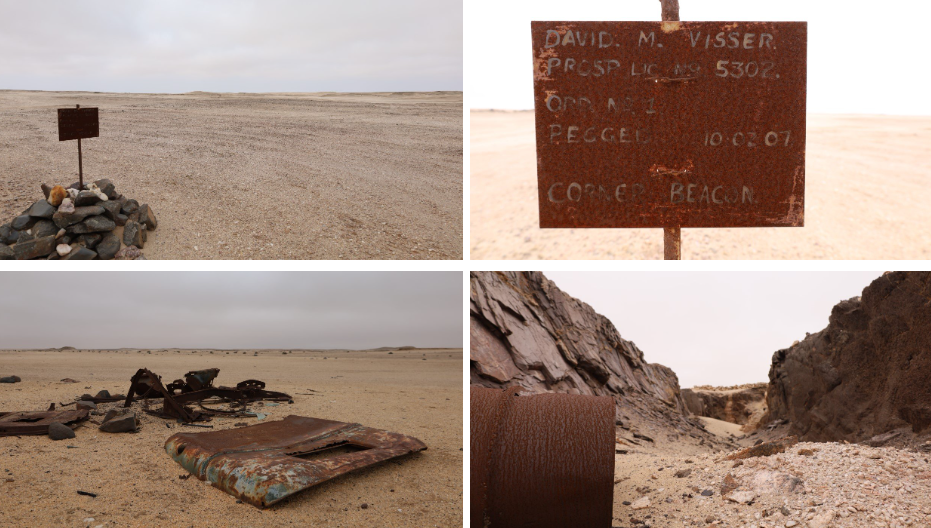
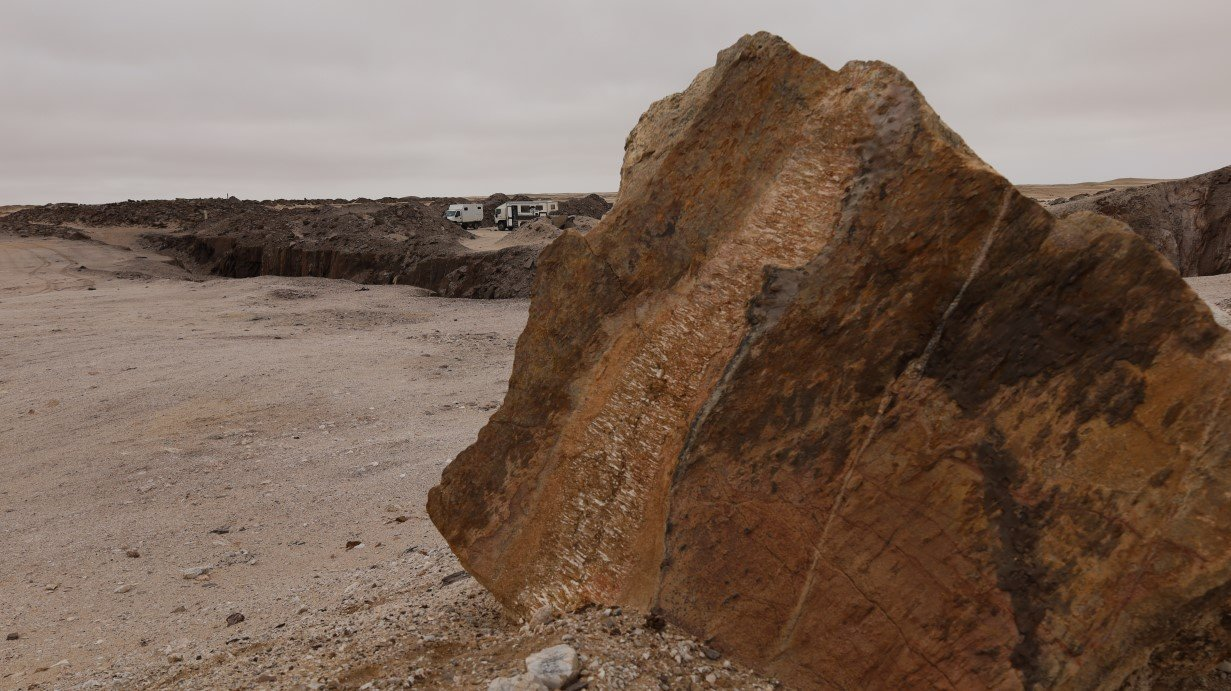
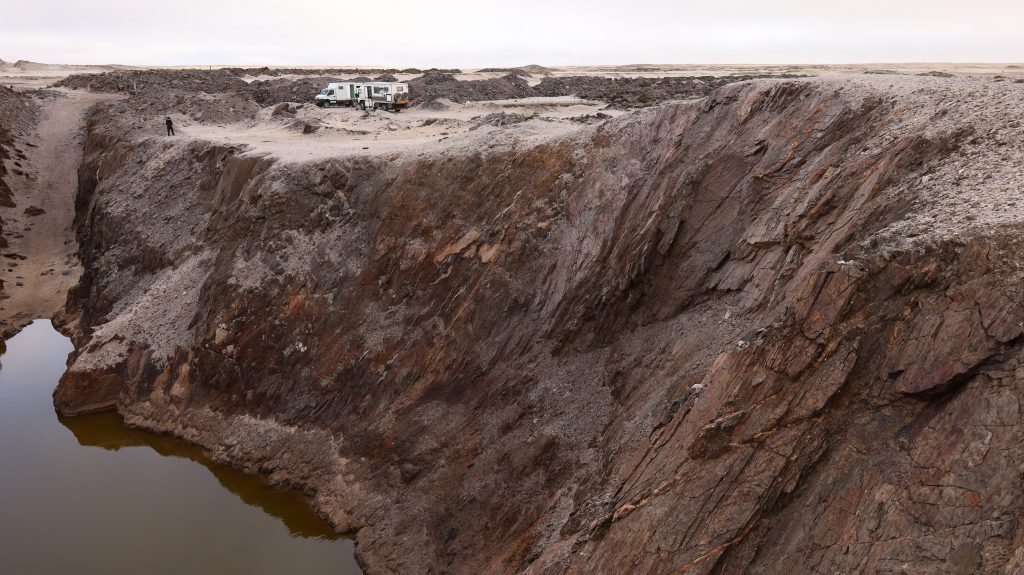
The following morning we split up once again, with the arrangement to meet up in Uis in a few days.
We must have taken a different route out of the desert as what we had come in, because all of a sudden we drove on a track and saw a few piles of stones with sticks a distance away from the road. When we stopped to have a look, we saw that they were indeed the three graves that were mentioned on the board. (Unfortunately we never found the whale bones).
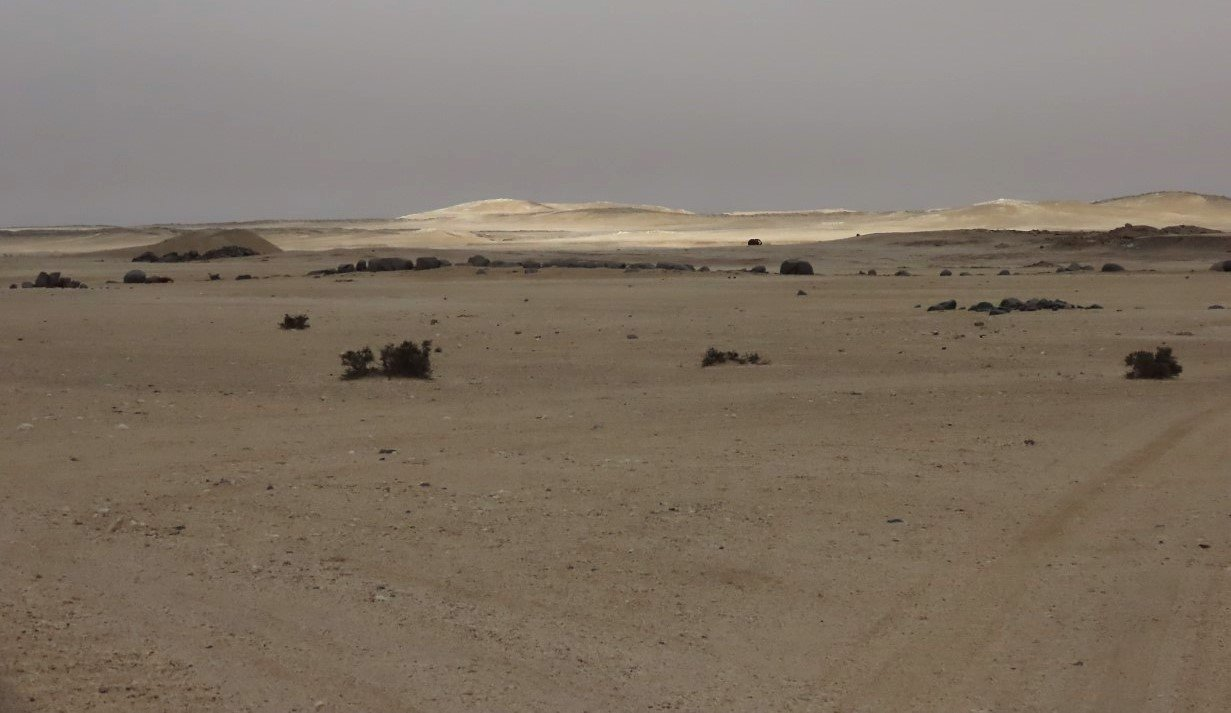
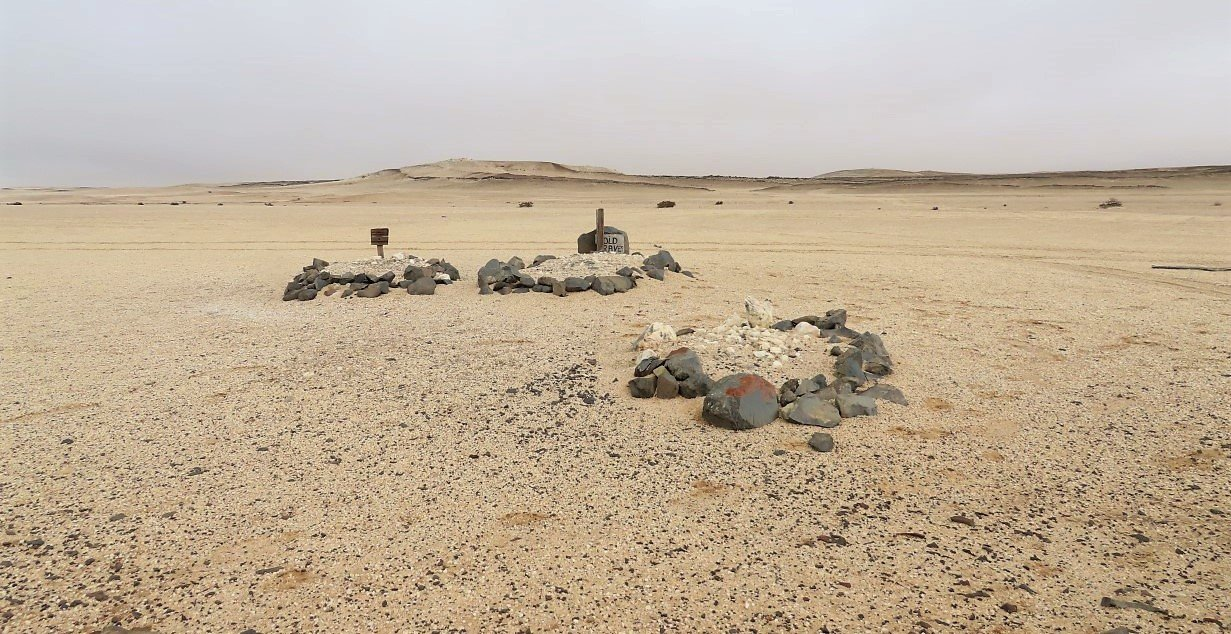
Following various tracks and diverting from the main track we came across what looked like a dry riverbed. There was a track running alongside the riverbed, which we followed. But obviously that track had to cross some (very dry and sandy) side arteries of the river and true as bob… the one was a bit deeper and bit more deep sand than the others and yes… you guessed it: we got stuck.
We didn’t have enough speed to get up the other side of the dip and we spun our back wheels a bit deeper in the sand. It wasn’t as bad as our Punda sink-away, but still not a situation I felt comfortable with. And now… we were on our own! Nobody to help dig and pull us out. Stefaan got the shovel to remove some of the sand in front of the back tires and let some air out of the front tires. I just prayed this would do the trick, because I was not really in the mood to test out the whole winch-recovery-thing! That’s one of those things I prefer to regard as wasted money (like insurance and medical) in that sense that I hope we will never have to use it.
Tires flat, slip-lane dug for the back tires, putting the diff-lock on and pushing the accelerator like crazy! Even though I got nervous when I saw tires digging deeper, with one or two back and forth manoeuvres, Stefaan got Trokkie out and back on the harder sand. I was massively relieved! It's one thing to camp on a desolate spot in the desert of your own free will... it's another thing altogether when you realise you're stuck in the sand and there is no one in sight as far as your eyes can see!
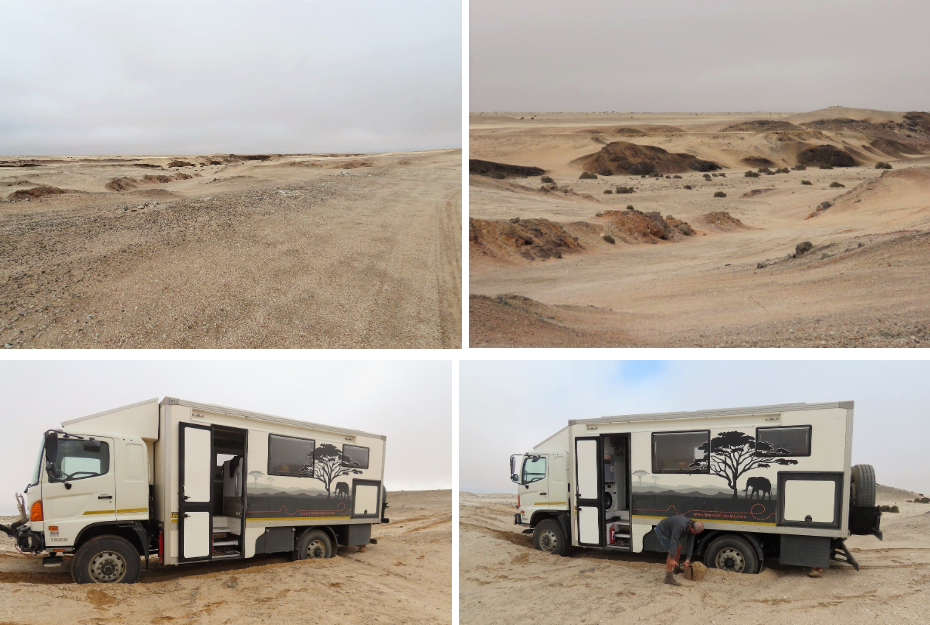
We drove back to the main track and there Stefaan decided this was the perfect place to have a break to calm my nerves! He set up our brunch spot in the middle of the desert and made toast and potato-egg skillet a la Masterchef!
It was quite a unique, be it a weird, experience to sit there and 360 degrees around us there was nothing but sand and gravel and a few mountains/hills dotted around. By that time we must have been about 5 km from the main road, which runs alongside the ocean because we could hear the rushing of the waves all the way to our spot in the desert. Amazing!
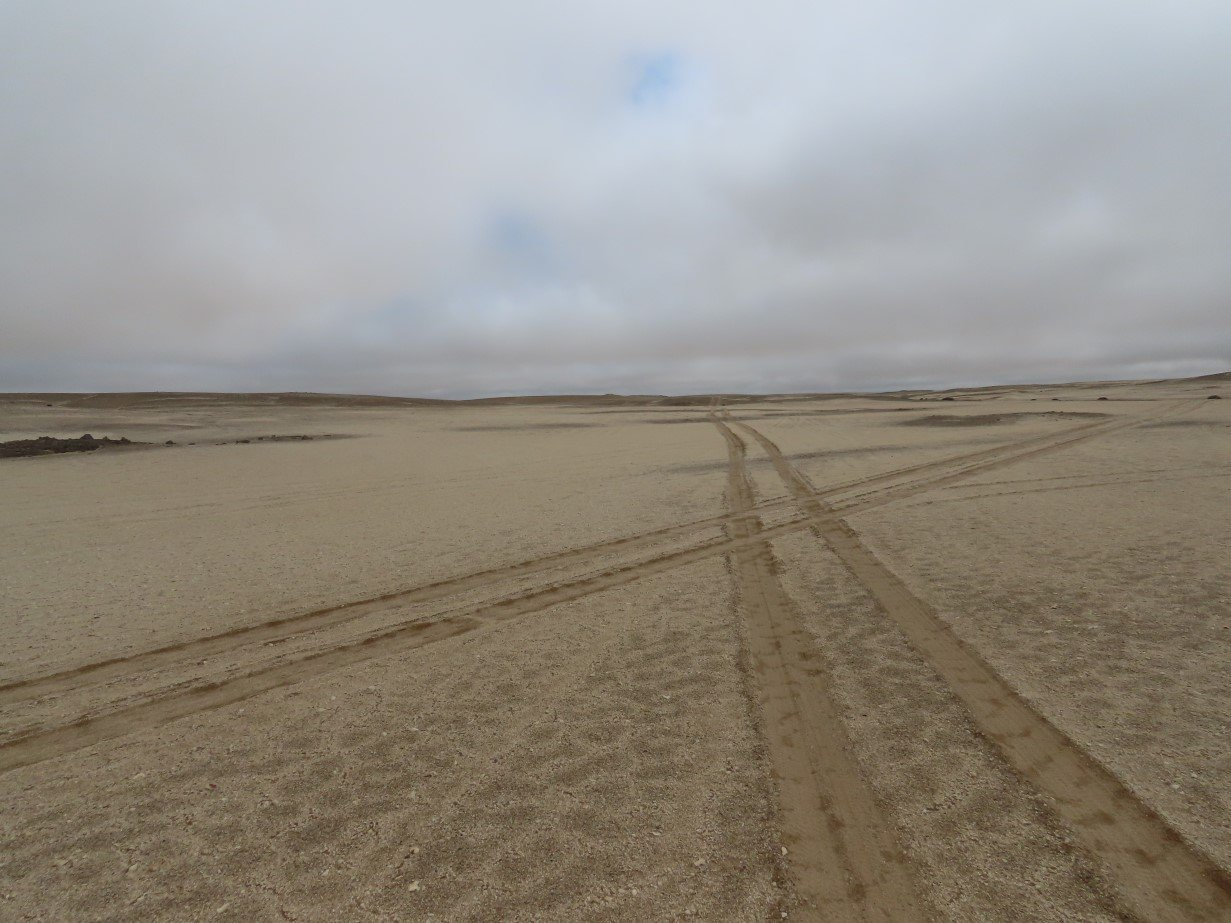
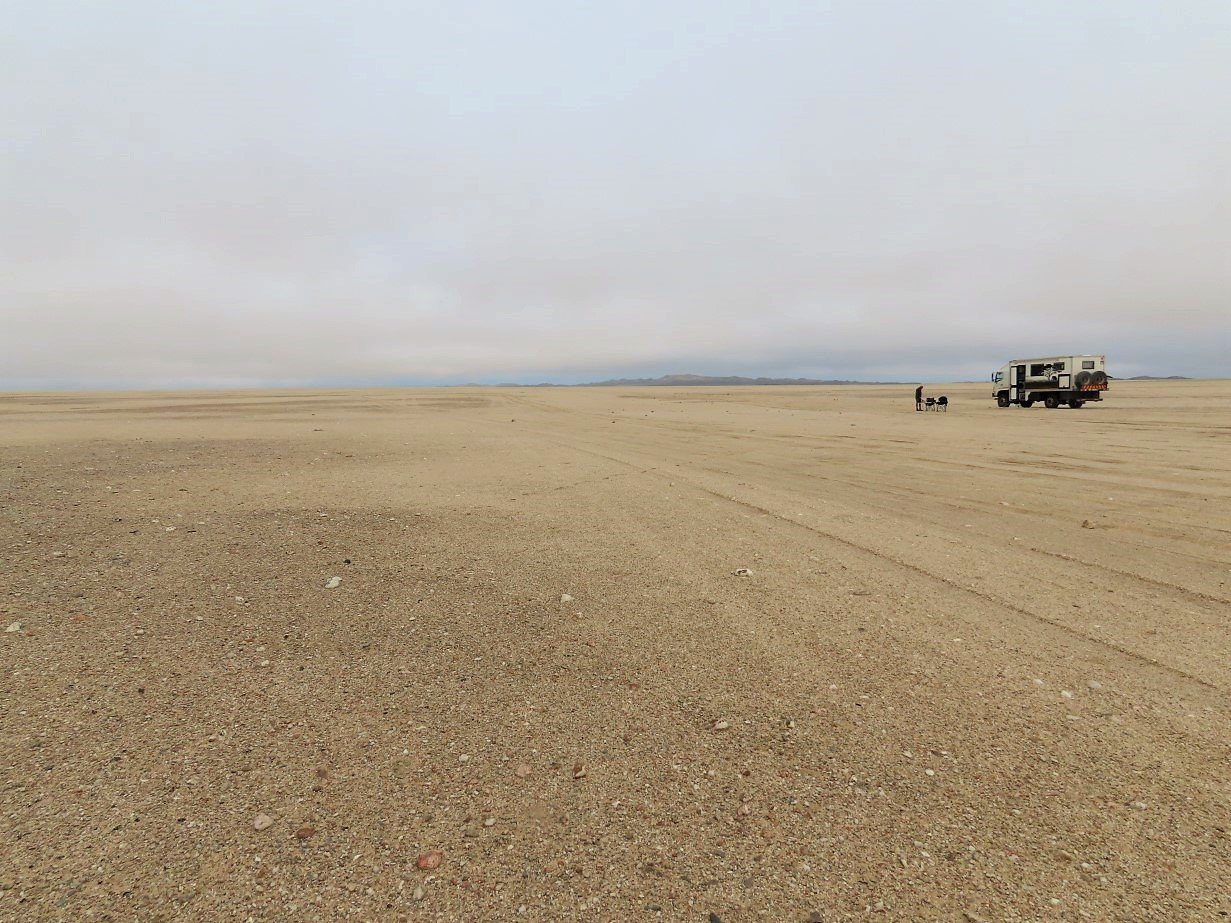
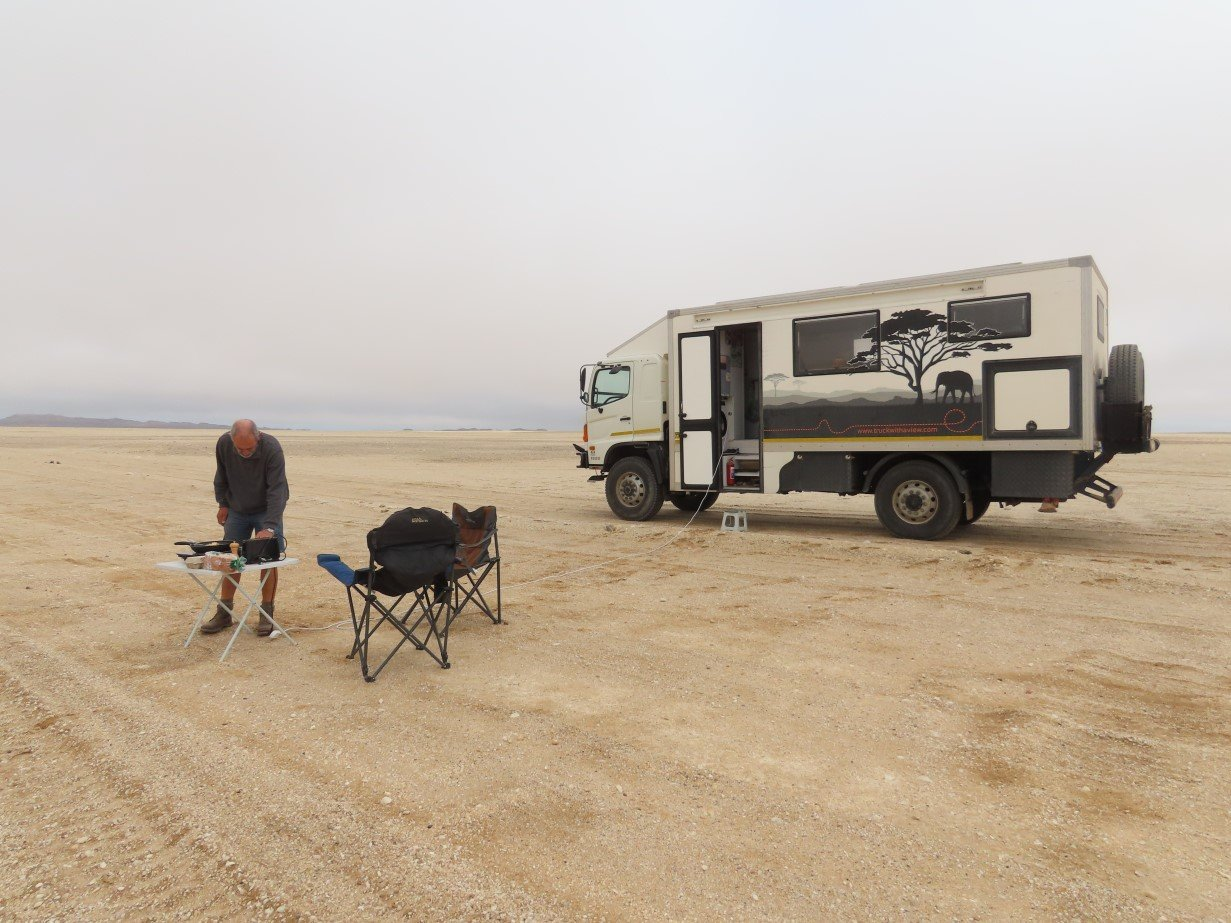
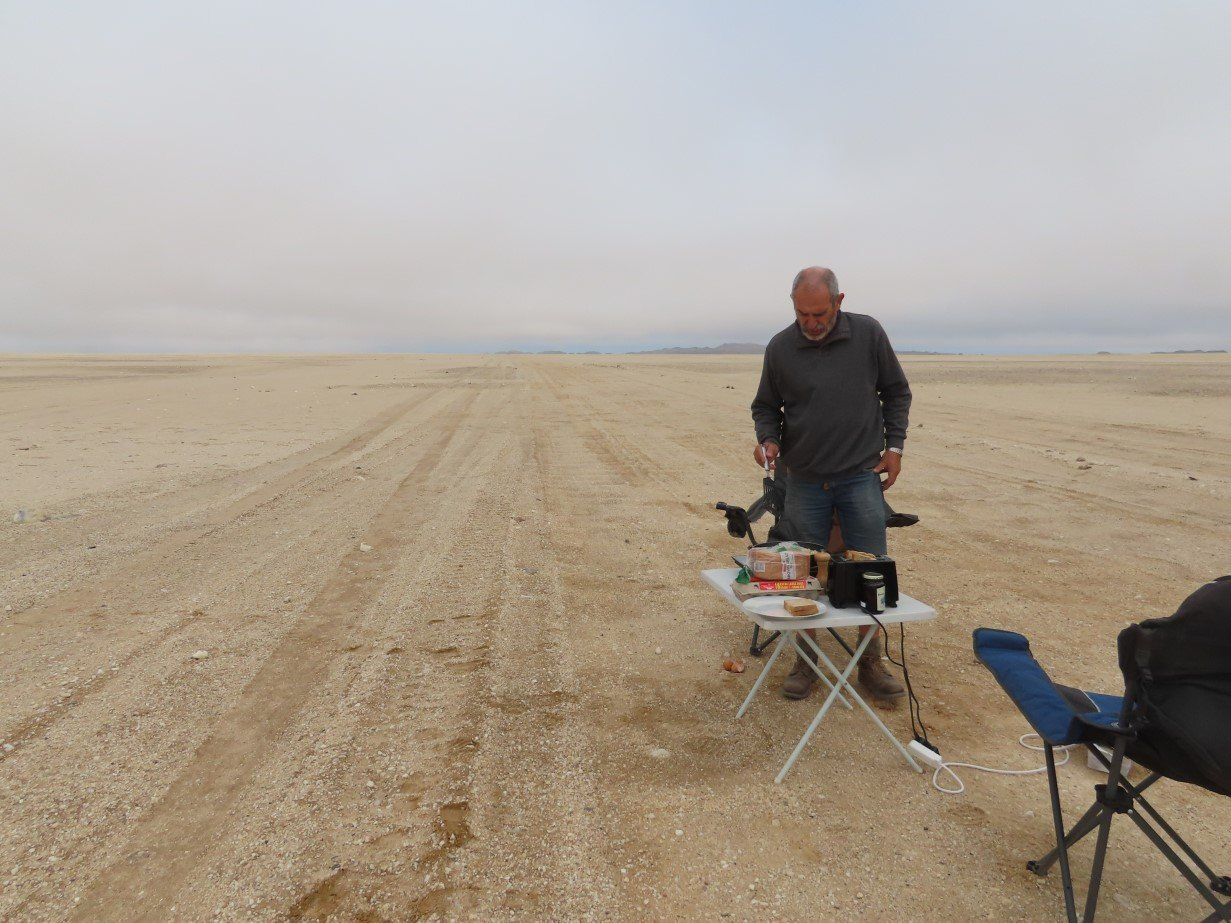
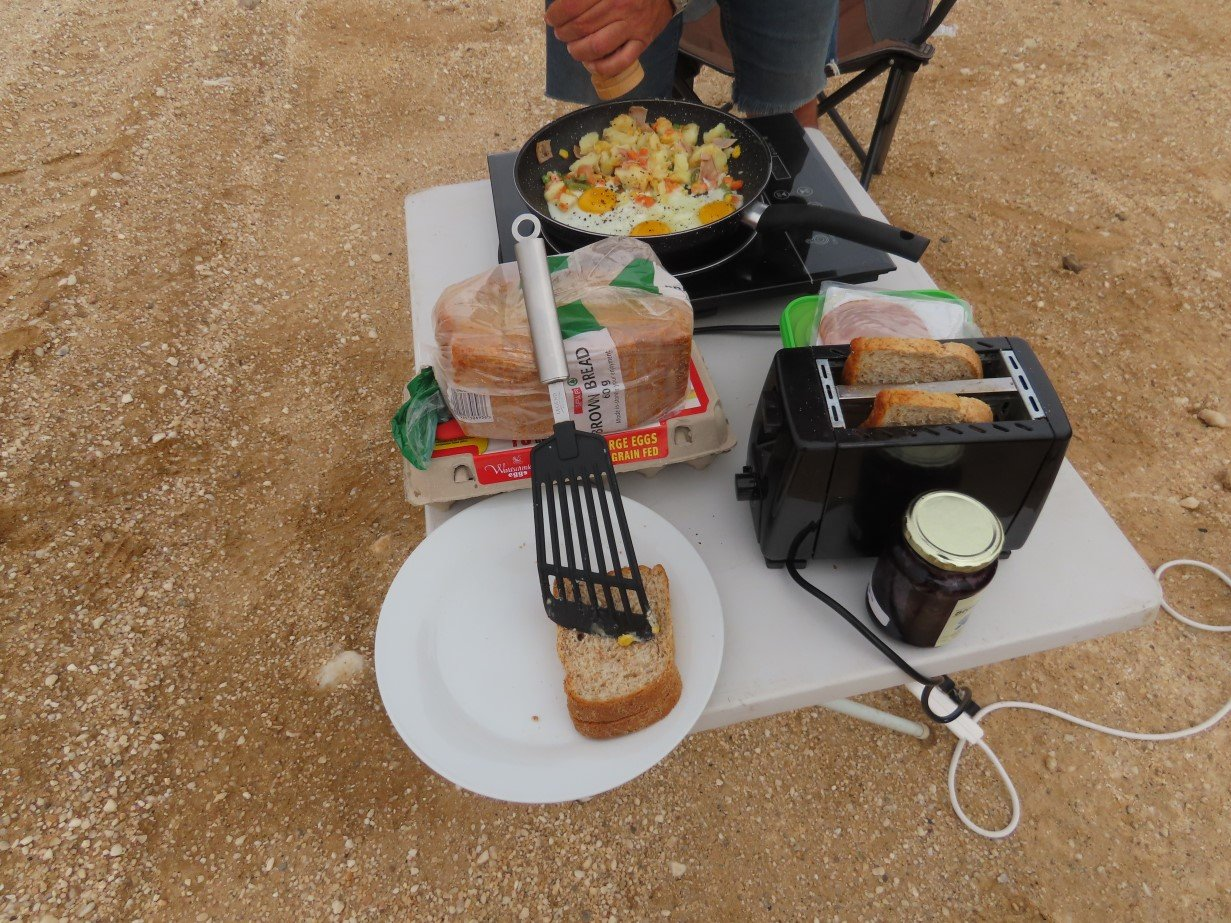
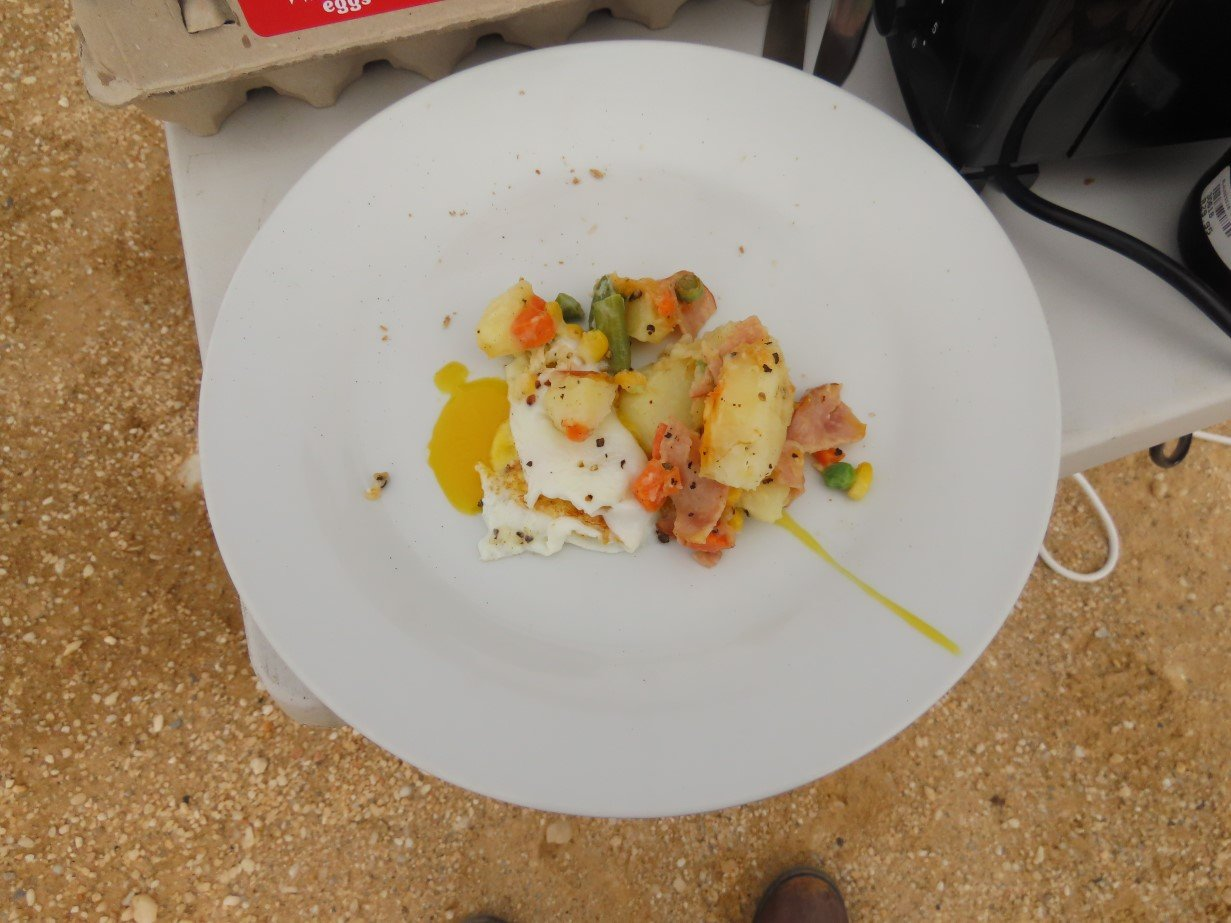
After our desert-brunch we drove our last few km’s on the sand and reached the main road again. About 20 or 30km further on we would get to the Cape Cross Seal Colony.
Just before we arrived at the Colony, we saw huge expanses of fenced land and, seeing we had seen something similar a few years ago when we had visited Walvis Bay, we deduced these must also be lichen protection reserves. And that was confirmed when we saw the sign at the turn off to the Seal Colony. The fog that drifts in from the ocean and sweeps the coastal areas gives just enough moisture to the barren desert areas so that these tiny lichen plants can survive in this sandy soil.
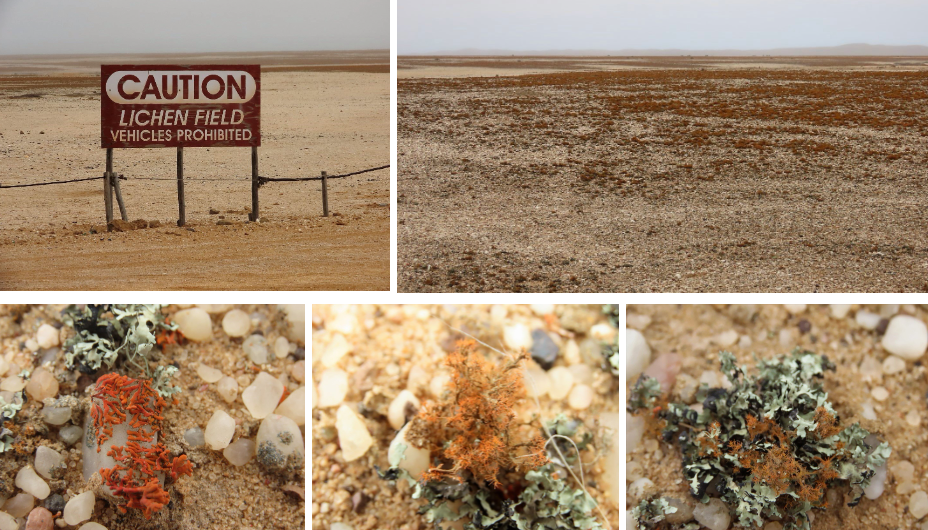
We eventually arrived at the Seal Colony: a very smelly place! September is the beginning of spring in the Southern hemisphere, and there were baby seals suckling all over. Unfortunately we also saw a few babies that hadn’t made it and were now eaten by seagulls and gannets. As we had seen signs along the road, warning for brown hyena’s (strandwolf/beachwolf), we suspected that they also might turn up to eat the dead baby seals.
There is a wooden walkway that acts as viewpoint: you can walk from one side to the other and see both the seals on the parking lot side and those on the rock and ocean side. When Stefaan gave it a first try to open the little gate to get onto the walkway, a grumpy male was very possessive of his spot at the gate and barked a warning to stay away. Location! Location! Location!
We did some other walking around and decided to give it another try. We were lucky this time we both got to the other side of the gate, but when I looked at the walkway, I saw that on various places the walkway sidings were broken and seals had crawled through and made the walkway their home. We decided to give the walkway a miss. We were not in the mood to get into a tiff with barking seals protecting their territory.
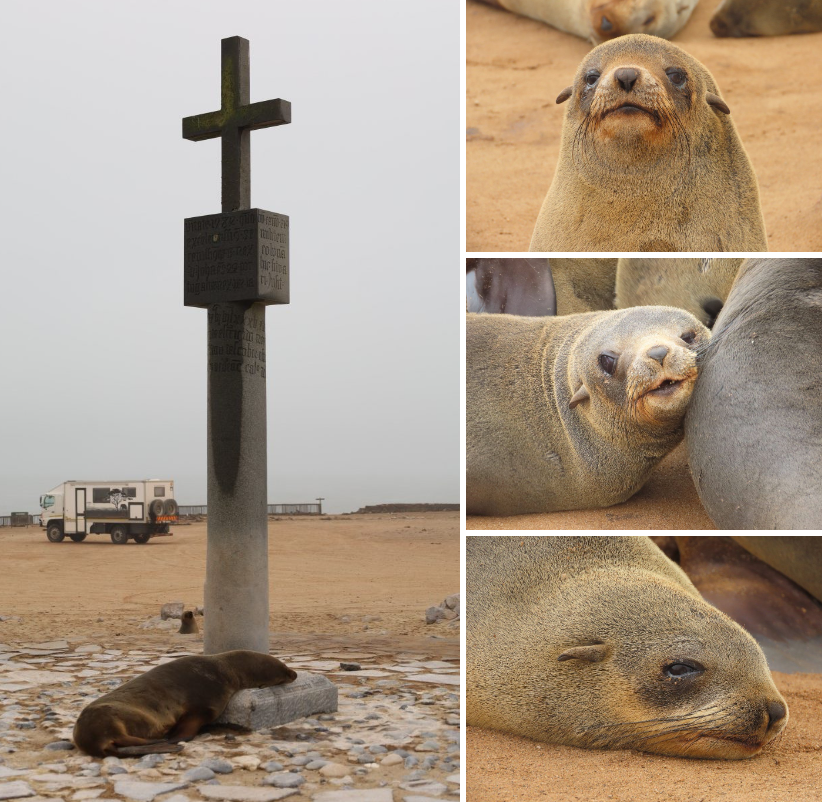
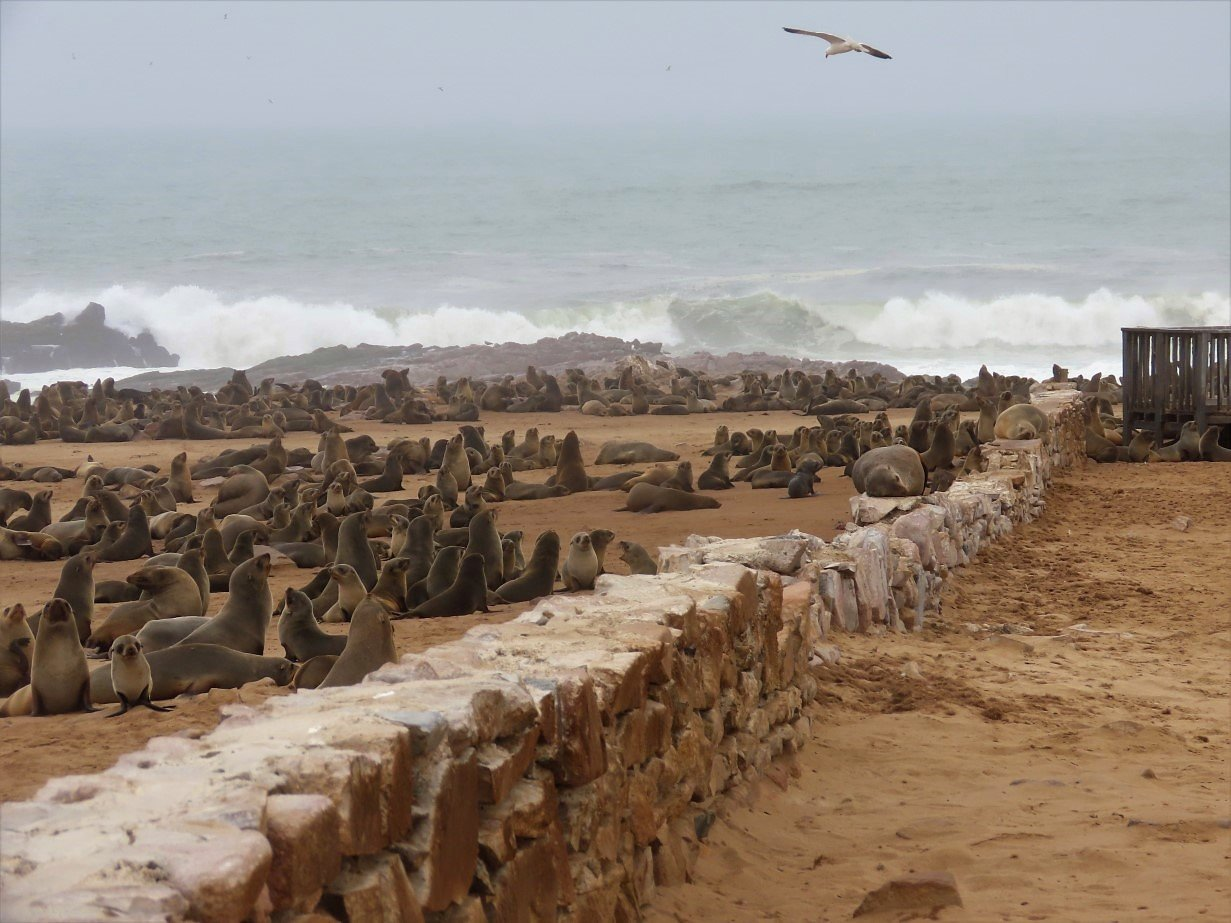
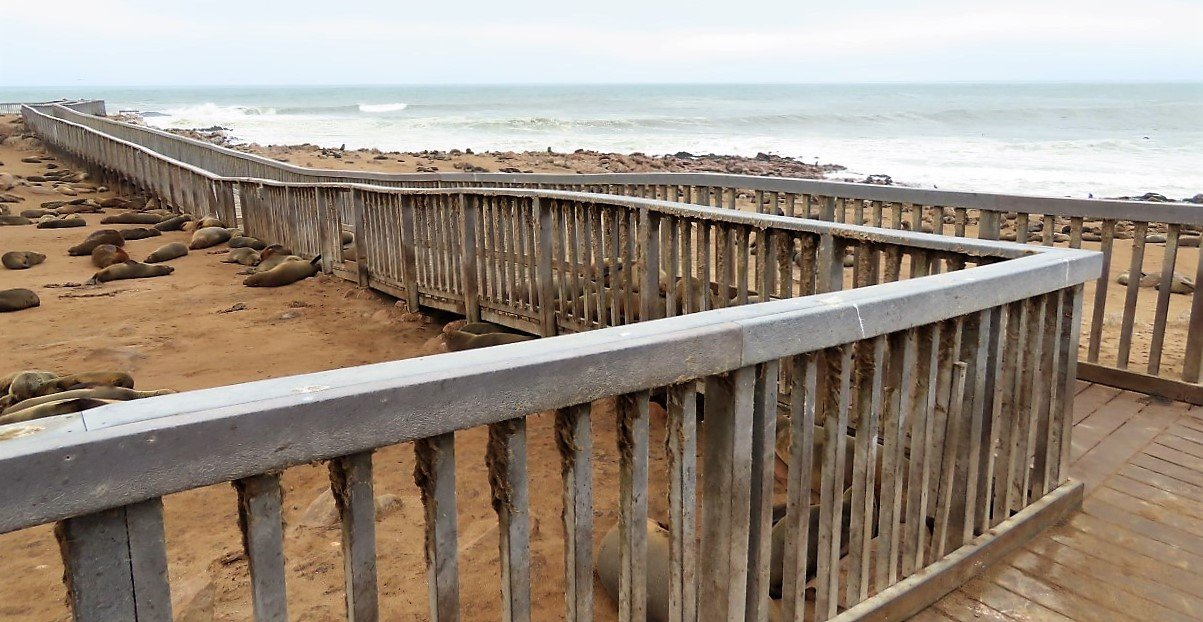
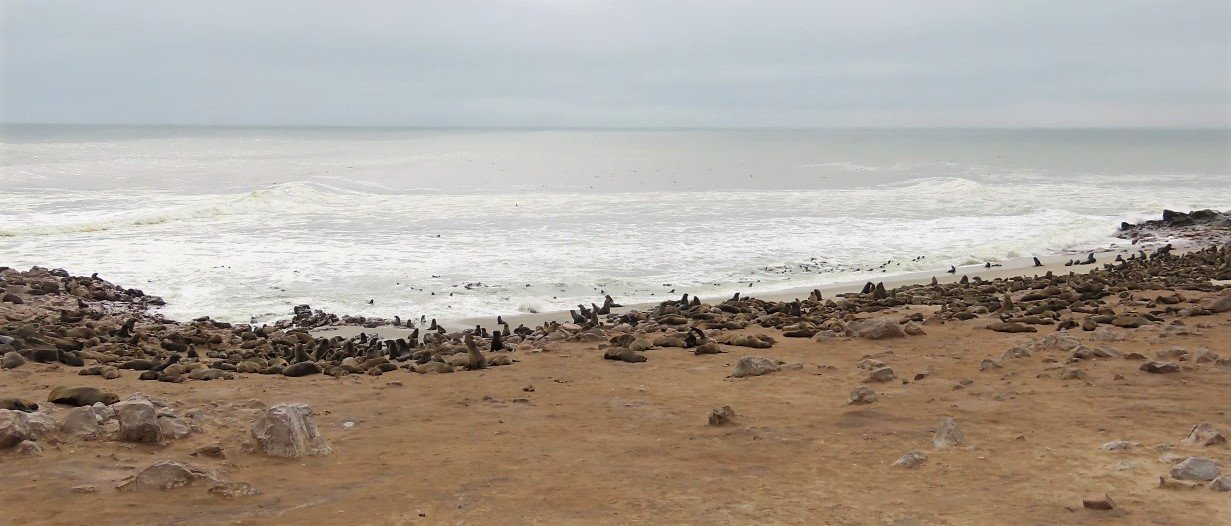
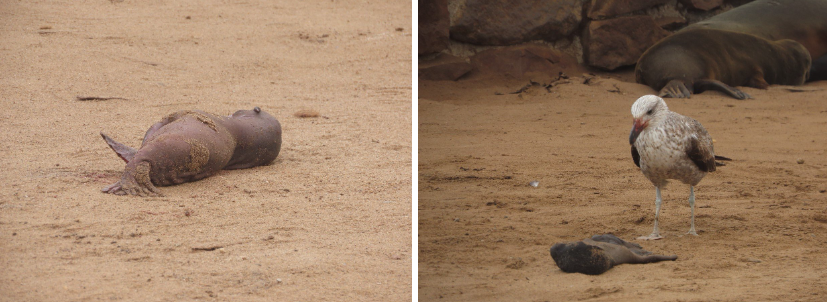
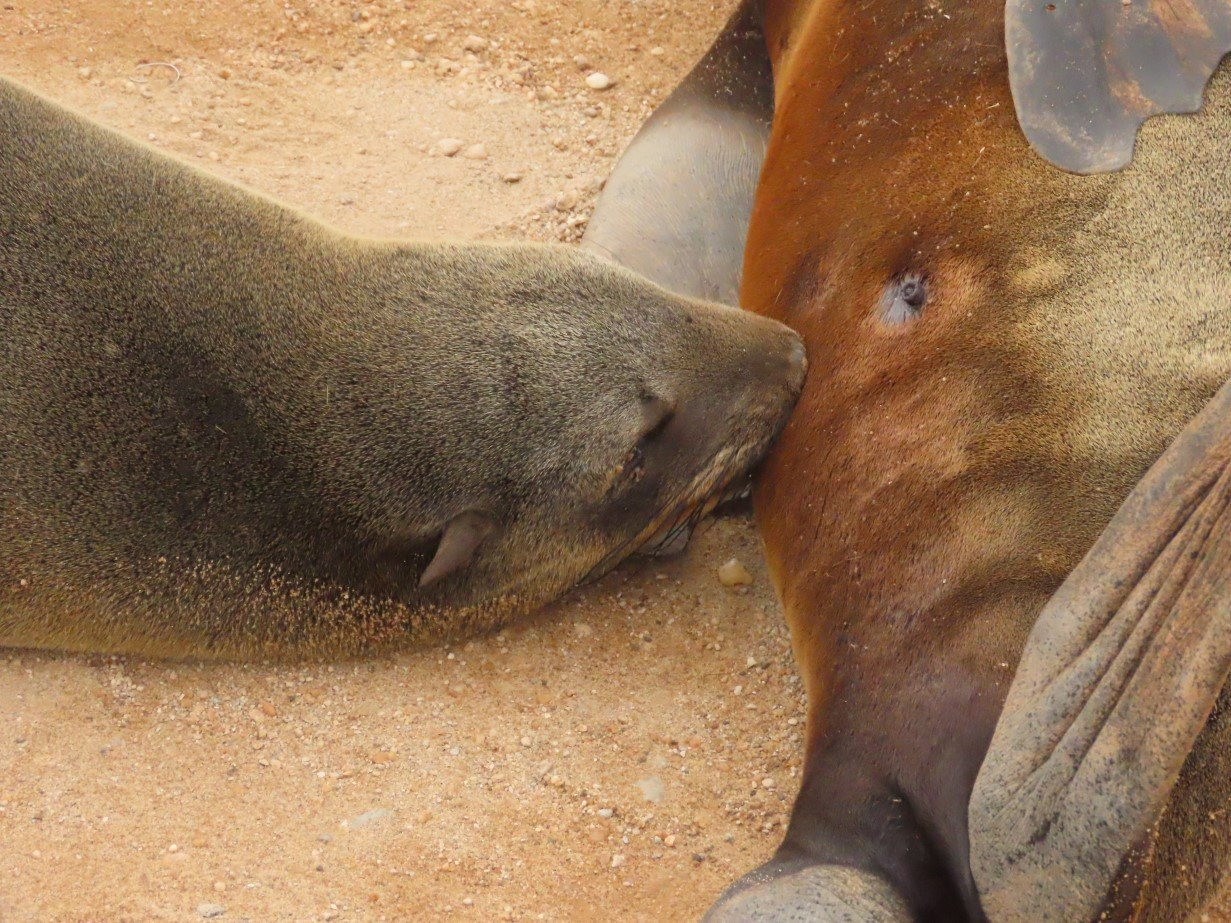

When we left the Colony we wanted to find the shipwreck Heideveld. But, although there are heaps of little roads going from the main road to the ocean, signage was very, very poor and we never found her. Many signposts had nothing but the frame standing, other just had a white board and the few that had text, mostly pointed to fishing spots on the beach.
When we eventually reached Mile 108, we turned right and a few km’s inland found a lonely spot where we parked for the night.
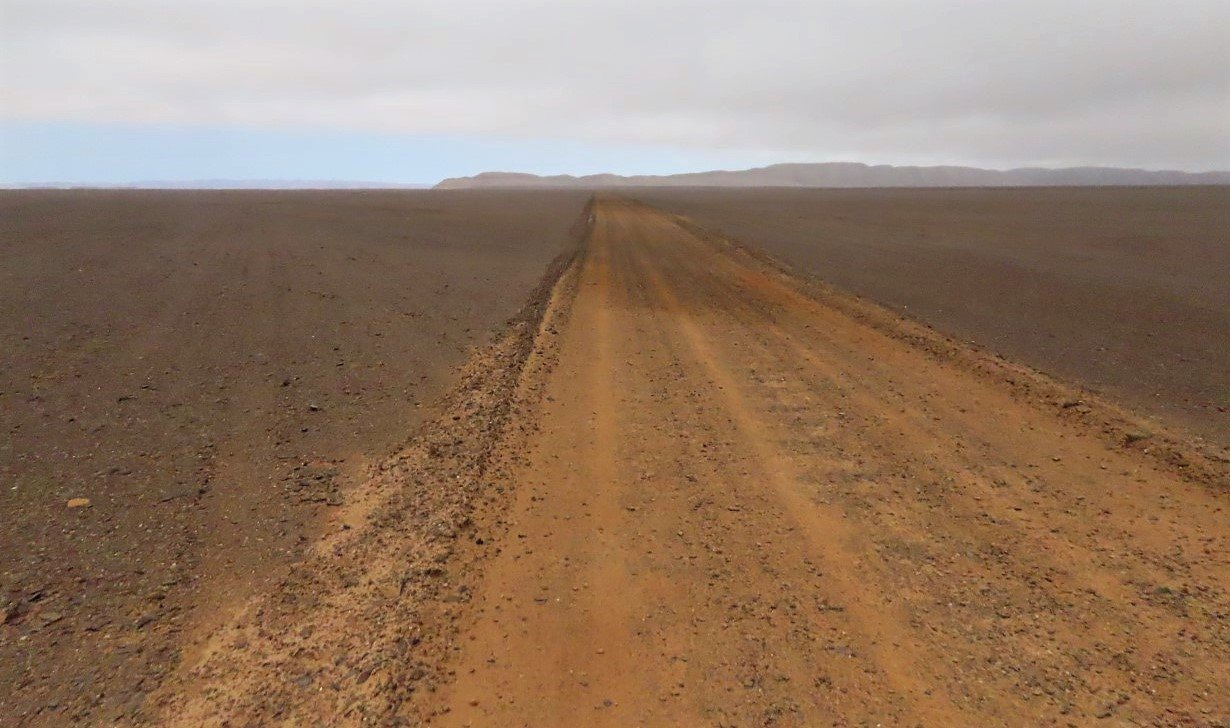
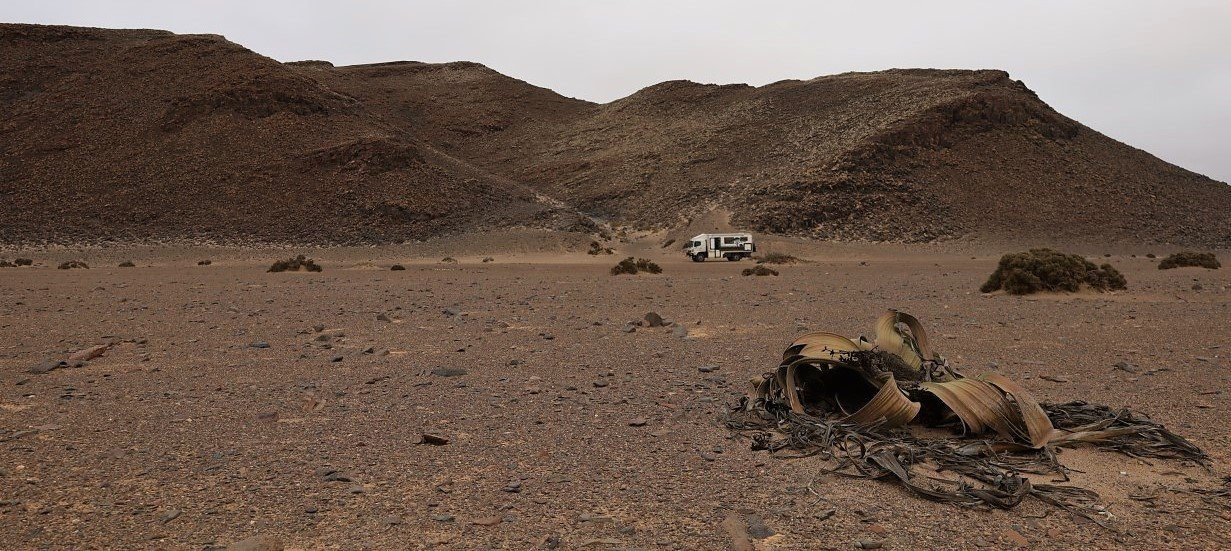
For more photos, clips and videos follow us on


Dead Sea Swimhole and Cape Cross Seals